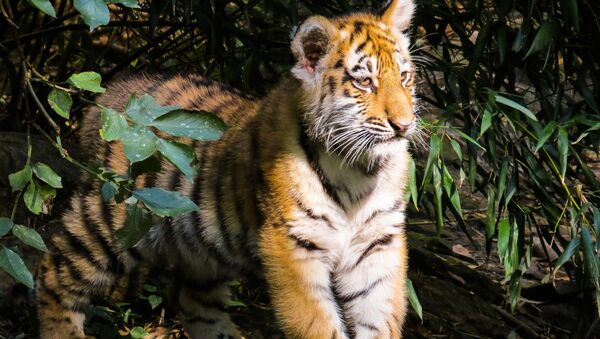According to the new tiger census (the 4th cycle of All India Tiger Estimation), at least 2967 big cats currently live in different habitats of the country. The tiger population in India increased from 2226 in 2014 to 2967 in 2018. There were only 1411 tigers in the country in 2006.
"Today, we reaffirm our commitment towards protecting tigers. Results of the just declared Tiger Census would make every Indian happy. Nine years ago it was decided in St. Petersburg that target of doubling tiger population will be 2022. We completed this target four years early," said the Prime Minister while announcing the survey result.
Releasing the results of All India Tiger Estimation. #InternationalTigerDay https://t.co/b73ADzson4
— Narendra Modi (@narendramodi) July 29, 2019
As per the document, central Madhya Pradesh saw the highest number of tigers with 526, followed by Karnataka with 524 and Uttarakhand with 442 tigers. Chhattisgarh recorded a decrease from 46 tigers in 2014 to 19 in 2018. Sunderbans in eastern West Bengal also recorded an increase from 76 last time to 88 in 2018 results.
On a lighter note, Modi mentioned a famous Bollywood film series. "The story that started with "Ek Tha Tiger (there was a tiger) and then continued with Tiger Zinda Hai (Tiger is alive) should not stop there. It should be "baaghon mein bahaar hai" (Tigers are blooming).
While releasing the data at his New Delhi residence, Modi reignited the environment versus development debate. He stressed that protected areas in the country have increased. "We need to take a broad-based and holistic look at environmental conservation," he added.
Nevertheless, the report claimed ensuring the functionality of habitat corridor connectivity between source tiger populations in India, Nepal, Bhutan, Bangladesh and Myanmar was essential for the long-term viability of the big cat populations in India and throughout the region.
The report also warned that tiger habitat corridors are often threatened by the development of linear infrastructure. It suggested careful planning to avoid traversing critical habitats to ensure that tigers and biodiversity conservation are not compromised by modern development.
Reasons for concern about the human-tiger conflict were illustrated on several recent occasions; including an incident in Pilibhit, Uttar Pradesh when a group of men mercilessly killed a tiger in a village near a tiger reserve.
According to figures released by the Wildlife Protection Society of India, an NGO which tracks wildlife-human conflict, in 2018, of 104 tiger deaths recorded in India, 43 were unnatural, including 34 due to poaching, and four shot dead or killed by villagers.
Since 2014, there were 63 cases of attacks on humans by tigers in Uttar Pradesh alone, an indication of encroachment on tiger habitats.




